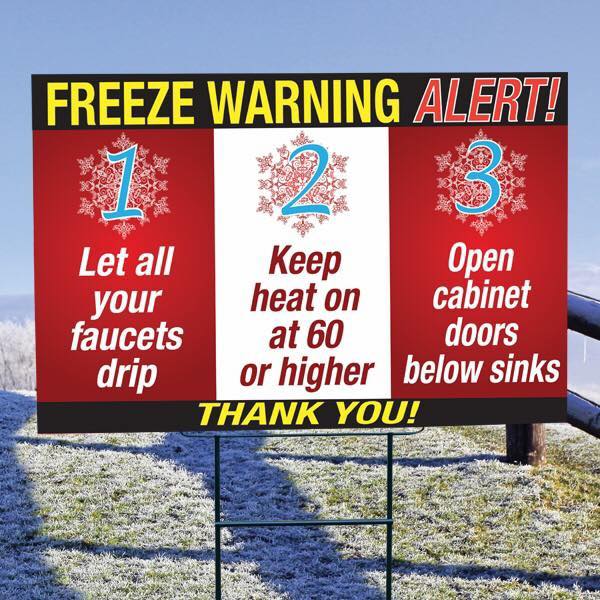The weather change is here! The low temperatures can cause issues to pipes. It is imperative that you take the proper precautions to properly winterize your unit. Here are some precautions that you can take to avoid frozen pipes and the subsequent expense and inconvenience that could follow.
Winterizing is the process that everyone should undertake to make your home ready for winter. Freezing temperatures, ice, snow and wind can cause severe damage to your home.
Why do pipes freeze?
Your pipes can freeze for any combination of reasons:
A. Quick drops in temperature to 20 degrees F or below
B. Extended hours below 32 degrees F
C. Poor insulation
D. Setting thermostats too low
How do I keep my pipes from freezing?
You can’t keep the temperature from dropping, but you can protect your pipes.
A. Insulating unfinished areas, such as garages, where pipes may be exposed.
B. Draining and shutting off pipes flowing to the outside faucets.
C. Leaving faucets slowly dripping and cabinets open to expose pipes to warmer air.
D. Having someone check your home regularly while you are away.
E. Disconnecting all gardening hoses and install covers on all outside faucets.
F. Keeping your house temperature at 68 degrees or higher at all times.
When a hard freeze is coming:
A. Let warm water trickle from faucets overnight, particularly on an exterior wall or at the end of a long stretch of unprotected pipe.
B. Open cabinet doors, especially near exterior walls, to allow heat to reach uninsulated pipes under sinks, etc. (Make sure harmful cleaners or other household chemicals are out of the reach of children.)
C. Don’t turn your thermostat down below 65 degrees during extreme cold. Further drops in temperature could be enough to cause a problem, especially inside walls where pipes are located. Your heating bill may go up a little, but that’s better than an expensive repair job if a pipe freezes and bursts.
My pipes froze…now what?
Don’t assume your pipes will automatically burst if they’ve frozen. No reason to panic yet.
A. Turn on your faucets and leave them on. As the frozen area starts to melt, water will start moving again and help more ice to melt.
B. Try to locate the frozen area of the pipe.
C. Apply heat to the frozen area if possible. You can use an electric heating pad, electric hair dryer, a portable space heater, or wrap the pipes in towels soaked in hot water.
CAUTION: never use a blowtorch, kerosene or propane heater or other open flame that could create a fire hazard. Such a device could also boil the water, causing the pipe to explode.
What if a pipe bursts?
Turn the water off at the main shutoff valve and leave the faucets on. Take a moment to locate where this is before it becomes an emergency.
It is important that heat is left on in vacant homes. If damage occurs due to heat being turned off, insurance companies may deem this as negligence and refuse to pay a claim.
Stay Safe and Warm!!





